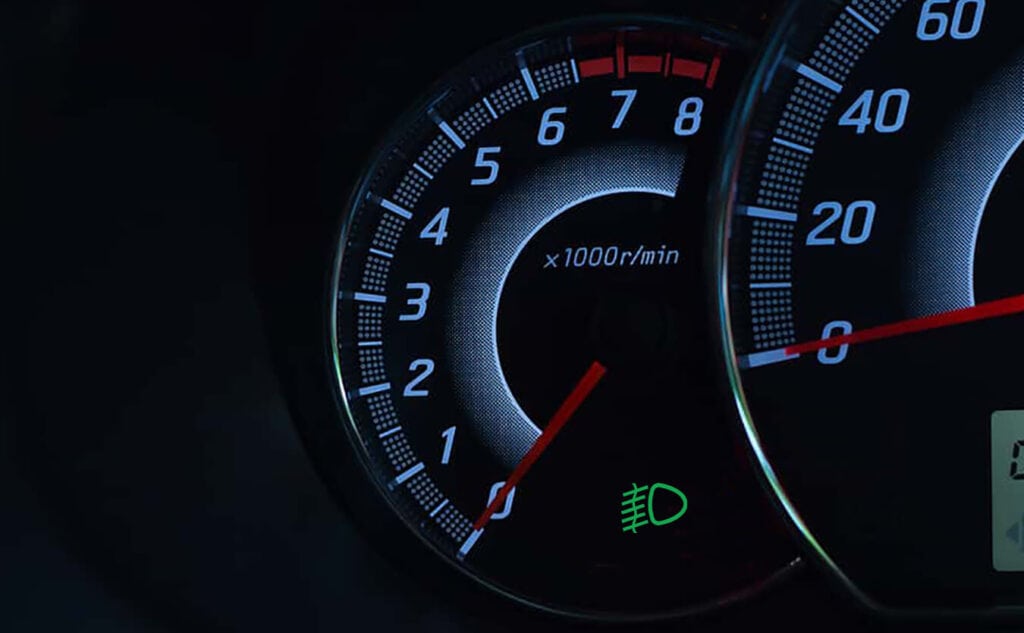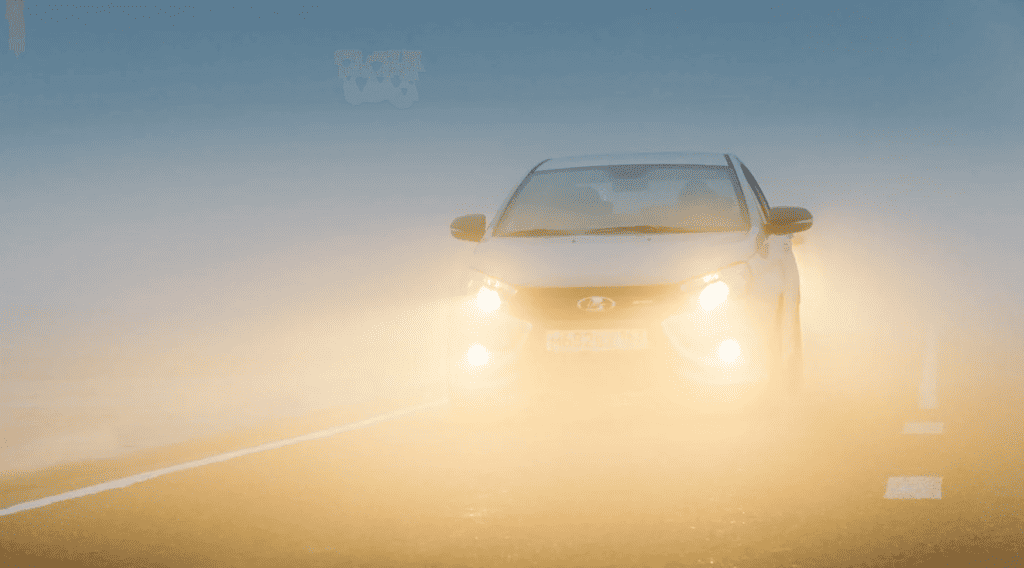Cutting Through the Mist—Why Your Fog Lamp Indicator Deserves Your Attention
You’re driving through a thick fog, and suddenly you notice an unfamiliar symbol lighting up on your dashboard. If it looks like a lamp with wavy lines, congratulations, you’ve just met your fog lamp indicator. Understanding this unassuming light is more crucial than you might think. Not only does it play a significant role in your road safety, but it also impacts vehicle maintenance. Ready to cut through the mist? Here’s your roadmap to becoming a fog lamp virtuoso.
Symbols and Signs: Interpreting the Fog Lamp Indicator Light
Common Symbols Explored
• Standard Icon: The most common representation is that of a lamp accompanied by horizontal wavy lines.
• Variations: Some vehicles might offer a slight twist to this icon, so check your owner’s manual for the exact symbol specific to your model.
• Purpose: Regardless of variations, the symbol is designed to instantly convey the idea of a lamp designed for foggy conditions.
Delving into the Palette of Colors
• Green Lights: A green indicator generally means your fog lamps are in good working condition and currently active.
• Yellow or Amber Lights: This color usually signifies that the system is operational but may require your attention, like a bulb nearing the end of its life cycle.
• Red Lights: If you see a red fog lamp indicator, it’s a critical warning that likely requires immediate professional attention.
• Color Variations: Keep in mind that not all vehicles will follow this color scheme, so it’s always wise to refer to the owner’s manual for precise information.
Dashboard Geography: Where to Find It
• Common Locations: The fog lamp indicator usually takes its place among other essential light indicators on your dashboard.
• Cluster of Controls: Often, you’ll find it near the headlight and turn signal indicators.
• Visibility: It’s typically designed to be easily visible so that you can promptly take necessary action.

Complementary Symbols and Warnings
• Text Alerts: In some high-tech vehicles, the symbol might be accompanied by a text alert or a digital readout.
• Audible Alerts: Rarely, the indicator might be coupled with a sound to grab your attention, especially if there is a malfunction.
Interacting with Other Indicators
• Synchronization: Your fog lamp indicators often work in tandem with other indicators to provide a comprehensive picture of your vehicle’s lighting status.
• Real-time Feedback: If your car has an automatic lighting system, the fog lamp indicator may change in real-time to reflect changes in external lighting conditions.
Functionality Explained: What Does the Fog Lamp Actually Do?
You may wonder why you even need fog lamps when your car already comes equipped with headlights. It’s all about the angle and focus. While headlights cast a beam that can reflect off water particles in the fog—making it harder to see—fog lamps aim their light closer to the ground, illuminating the road at a different angle. This design reduces the glare you would experience with traditional headlights, effectively cutting through the misty veil to make road markings and obstacles more visible.
But these specialized lights aren’t a free-for-all. Fog lamps are power consumers, and using them unnecessarily can lead to unwanted wear and a drained battery. It’s a bit like using your air conditioner in winter; sure, you can do it, but why would you? Fog lamps should be reserved for those moments when you genuinely need improved visibility, like fog, heavy rain, or snow. They’re like the special teams of your car’s lighting system—valuable, but strategically deployed.
Cost Breakdown: The Price Tag of Ignoring a Fog Light Warning
The Humble Bulb Replacement
A simple fog light bulb replacement usually costs around $20. If you’re not a DIY type, the labor cost can range from $50 to $70, depending on where you go. Premium brands can drive the price up, so decide what’s essential for you—quality or affordability.
The Spider Web of Wiring Issues
Faulty wiring is more complicated and can run up to $100 for the repair. In some cases, diagnostic fees may be applied, which can add another $40 to $50 to the final bill. If a wiring problem is severe, involving your car’s electrical system, the costs could skyrocket.
Fused Out: The Cost of Fuse Replacement
Replacing a blown fuse is generally inexpensive, often less than $10 for the part. Again, if you’re not doing it yourself, add the cost of labor, which is generally nominal for a fuse replacement.
The Cumulative Effect: Compounded Costs of Negligence
Ignoring fog light warnings can lead to visibility issues, putting you and others at risk. Minor problems can snowball into bigger ones, leading to more significant repair costs down the line. A car with recurrent issues will have a lower resale value, adding an indirect cost to your negligence.
Common Problems and Solutions: Why Aren’t My Fog Lights Working?
The Mystery of the Blinking Lights
• Possible Causes: Blinking lights can be due to a loose bulb, frayed wiring, or a dying bulb.
• DIY Fixes: Tightening the bulb or patching a wire may resolve the issue.
• Consult the Manual: Some cars have a self-diagnosis mode that may help identify the problem.
Going Dark: The Lights Won’t Come On
• Burnt-Out Bulb: This is the most straightforward issue to diagnose and solve. A new bulb is all you need.
• Blown Fuse: A less evident but simple issue to fix. Replace the fuse and test the lights.
• Wiring Concerns: If you’ve tried the above and nothing works, a wire might be the culprit, in which case, see a mechanic.
Halfway There: Only One Light Works
• Single Bulb: It could be that only one bulb needs replacing.
• Circuit Issues: If one side isn’t working, it might be a problem with the circuit on that particular side.
• Owner’s Manual: Always refer to the owner’s manual for troubleshooting guides specific to your vehicle model.
When to Dial Your Mechanic
• Beyond the Bulb: If a new bulb doesn’t fix the issue, you probably need professional help.
• Persistent Issues: If problems reoccur despite fixes, a mechanic’s expertise is necessary.
• Safety First: For complicated electrical issues, it’s better to have a certified mechanic handle it to avoid further complications or even hazards.

The Legalities and Best Practices: When to Use and When Not to Use Fog Lamps
When it comes to the law and fog lamps, it’s not a one-size-fits-all situation. Different jurisdictions have varying rules on when these specialized lights should be used. For instance, in some parts of Canada, you’re only allowed to use fog lamps in specific weather conditions like, well, fog, or other low-visibility situations such as heavy rain or snow. Ignorance isn’t bliss here; not knowing the local laws could leave you in a fog of trouble, ranging from fines to points on your driving record.
That brings us to the second part—proper usage. Turning on fog lamps just because they look cool might not be the brightest idea. In clear weather conditions, using fog lamps could actually be a ticketable offense. You don’t want to confuse other drivers or cause unnecessary glare. To keep it simple, use fog lamps only when visibility is seriously reduced. And as a good rule of thumb, always consult your vehicle’s manual to understand not just how but when to utilize this feature effectively.
Automatic vs. Manual: Do Fog Lights Operate on Their Own?
In the good ol’ days—and by that, we mean most cars manufactured before the tech boom—fog lights were strictly a manual affair. You had to physically flip a switch or press a button to activate them. It gave you full control but also came with the responsibility of remembering to turn them on or off as conditions warranted.
Fast forward to our tech-savvy era, and many modern vehicles come equipped with sensors that detect environmental conditions, automatically turning fog lights on or off. It’s a convenient feature, but it’s not foolproof. Sometimes, the sensors may not activate the lights when you actually need them, or they could turn them on when it’s not necessary. No matter the operation mode—manual or automatic—your fog lamp indicator will still light up on the dashboard to let you know what’s happening. So, keep an eye on that little light; it’s more informative than you might think.
Illuminating Safe Practices for Foggy Situations
Understanding your fog lamp indicator and how to use fog lamps responsibly can make all the difference in maintaining a safe driving environment. If you’re having issues with your fog lights and you’re in Canada, consider getting professional help from Uchanics mobile mechanic services. They’ll help you navigate even the foggiest of situations, ensuring you stay safe and your car stays in top condition.
